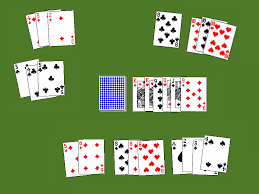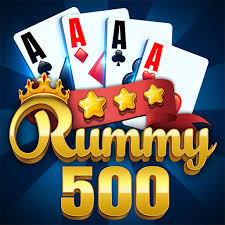Rummy 500 Rules is a popular variation of the classic card game Rummy, known for its engaging gameplay and strategic depth. Unlike traditional Rummy, Rummy 500 allows players to score points over multiple rounds, making it a favorite among both casual and competitive players. In this article, we’ll explore the rules of Rummy 500, including setup, gameplay mechanics, scoring, and strategies to enhance your chances of winning.
Game Setup
- Number of Players: Rummy 500 is typically played with 2 to 8 players.
- Deck: The game uses a standard 52-card deck. If there are more than 6 players, a second deck may be added.
- Objective: The goal of Rummy 500 is to be the first player to reach 500 points by forming valid sets and runs.
Card Values
- Number Cards (2-10): Face value (e.g., a 5 is worth 5 points).
- Face Cards (Jack, Queen, King): Worth 10 points each.
- Aces: Can be worth either 1 point or 15 points, depending on how they are used in sets or runs.
Gameplay Mechanics
- Dealing Cards: Each player is dealt 7 cards. The remaining cards form the draw pile, and the top card is placed face-up to start the discard pile.
- Taking Turns: Players take turns in clockwise order, with each turn consisting of the following actions:
- Draw: At the beginning of their turn, a player must draw one card from either the draw pile or the discard pile.
- Melding: After drawing, players may place valid sets or runs on the table. A valid set consists of three or more cards of the same rank, while a run consists of three or more consecutive cards of the same suit.
- Discard: To end their turn, players must discard one card onto the discard pile.
- Ending the Round: A round ends when a player goes out by melding all their cards, either through sets and runs or by discarding their last card. Players can also end the round if they have no legal moves left.
Scoring
After a round ends, players tally their points based on the cards they have melded and those remaining in their hands:
- Melded Cards: Points from valid sets and runs are added to a player’s score.
- Unmelded Cards: Points from unmelded cards are subtracted from the player’s total score. The total point value of the cards left in each player’s hand is calculated, and the values are deducted from their score.
The player who goes out earns bonus points, typically 10 points, in addition to the points scored from melded cards.
Winning the Game
The game continues until one player reaches a total of 500 points. At this point, the player with the highest score is declared the winner.
Strategies for Success
- Observe Opponents: Pay attention to the cards your opponents are drawing and discarding. This can provide insight into their strategies and help you block their potential melds.
- Meld Early: Try to form and lay down sets and runs early in the game. This can help you build a strong foundation and reduce the number of points you could lose if another player goes out.
- Manage Your Discards: Be strategic with your discards. Avoid discarding cards that could help your opponents complete their sets or runs.
- Hold onto High-Value Cards: Keep track of Aces and face cards, as they can significantly impact your score if left unmelded. Consider whether it’s worth holding onto them or melding them early.
- Adapt Your Strategy: Be flexible and ready to adjust your strategy based on the flow of the game and the actions of your opponents.
Conclusion
Rummy 500 is a captivating card game that combines elements of strategy and chance, making it enjoyable for players of all ages. By understanding the rules, scoring mechanics, and effective strategies, you can enhance your gameplay and increase your chances of reaching that coveted 500-point mark. Gather your friends, shuffle the cards, and dive into the world of Rummy 500 for an exciting and challenging card-playing experience.





